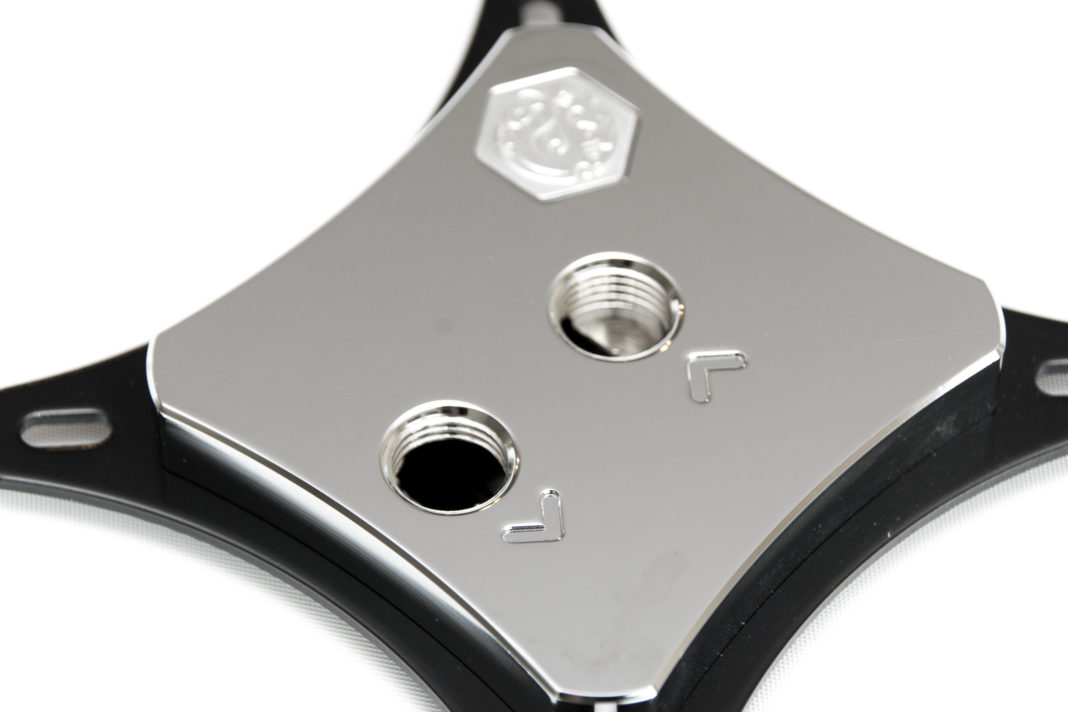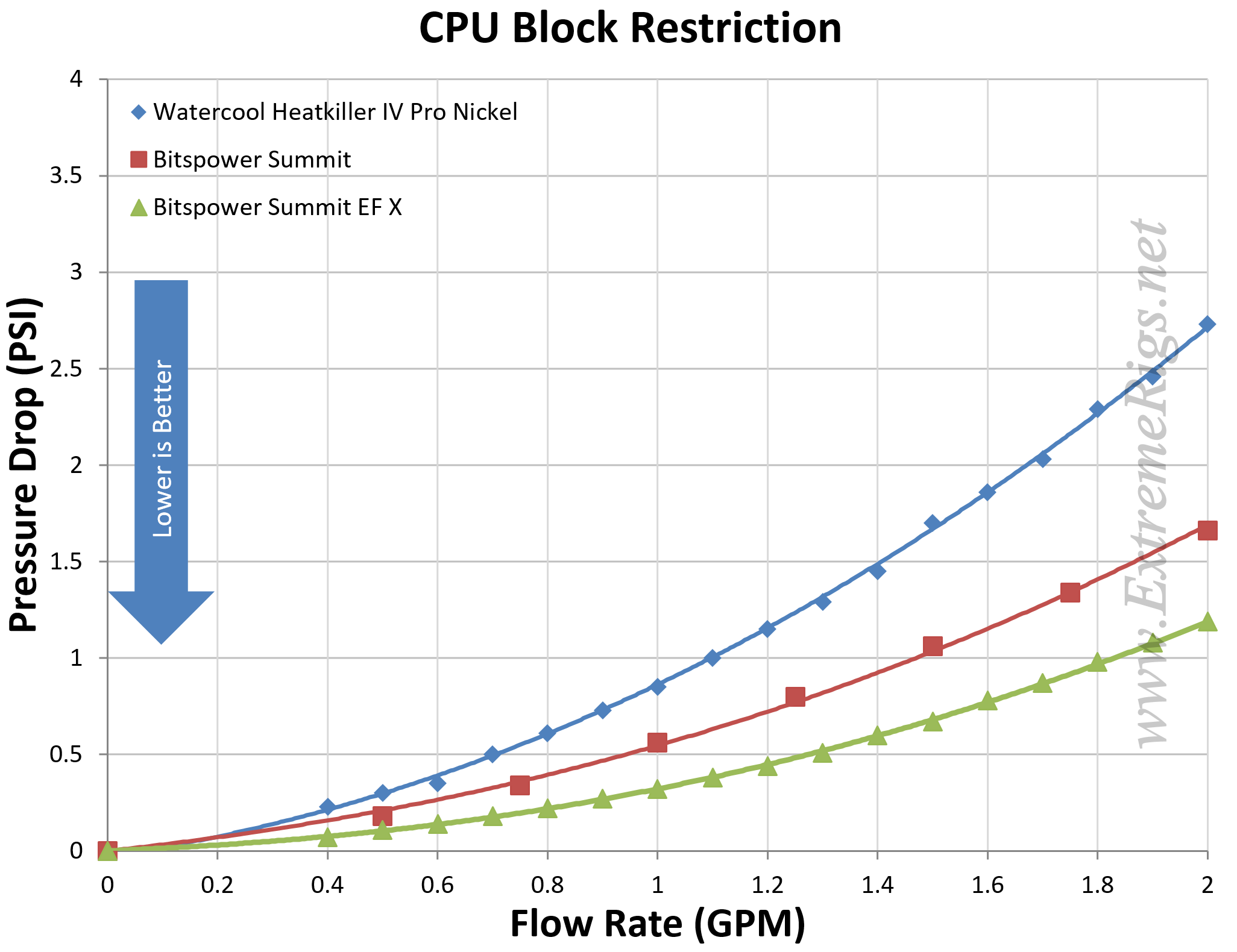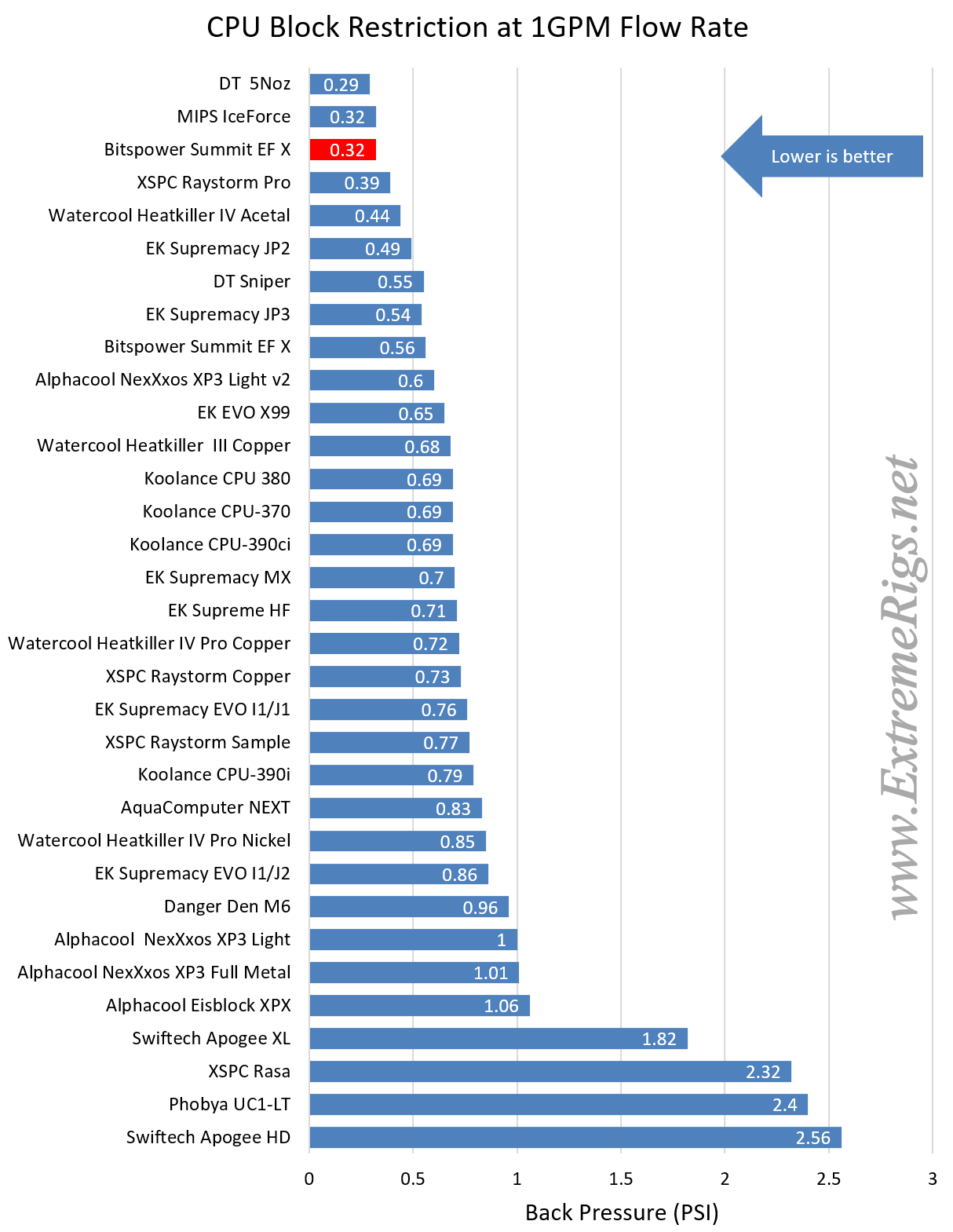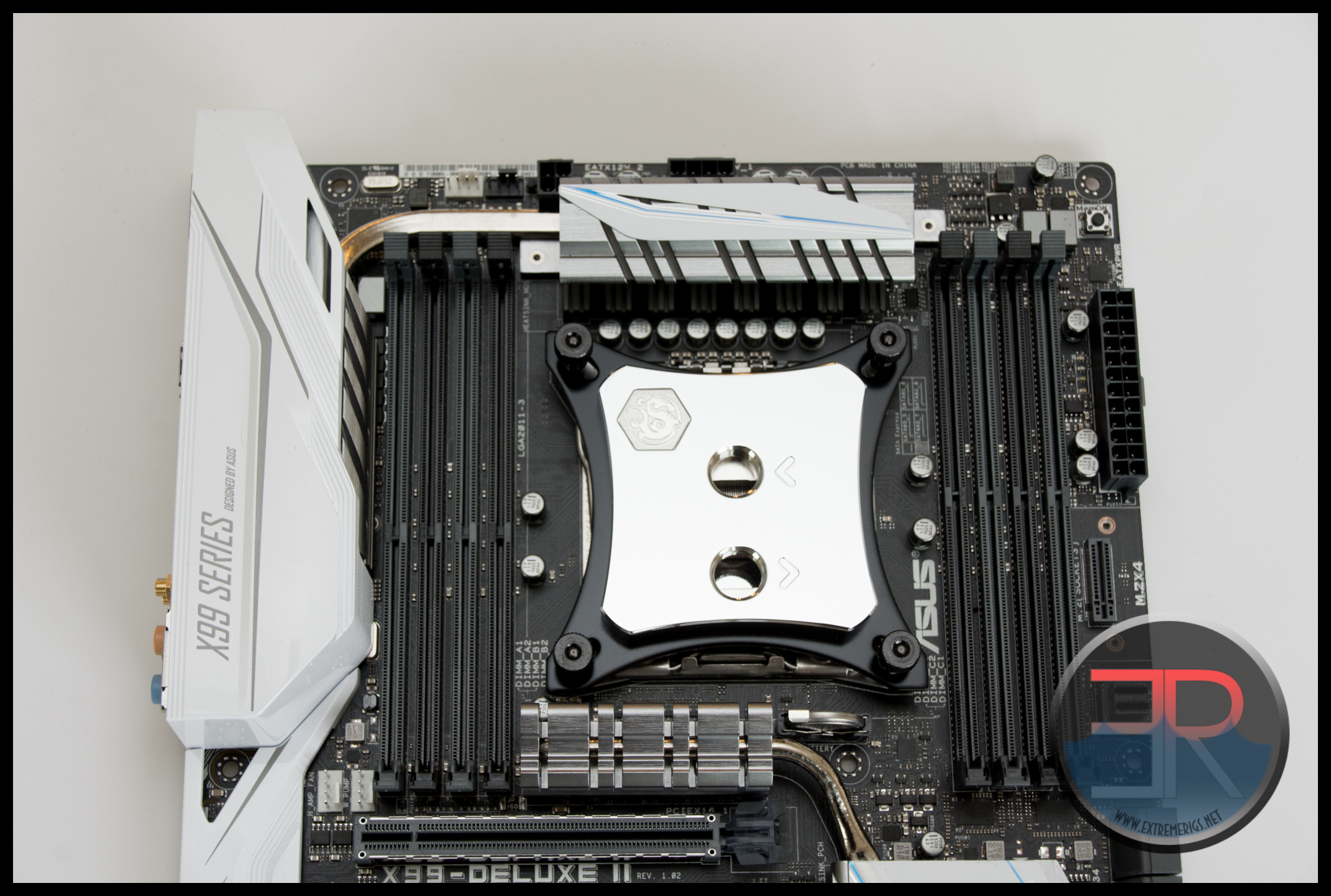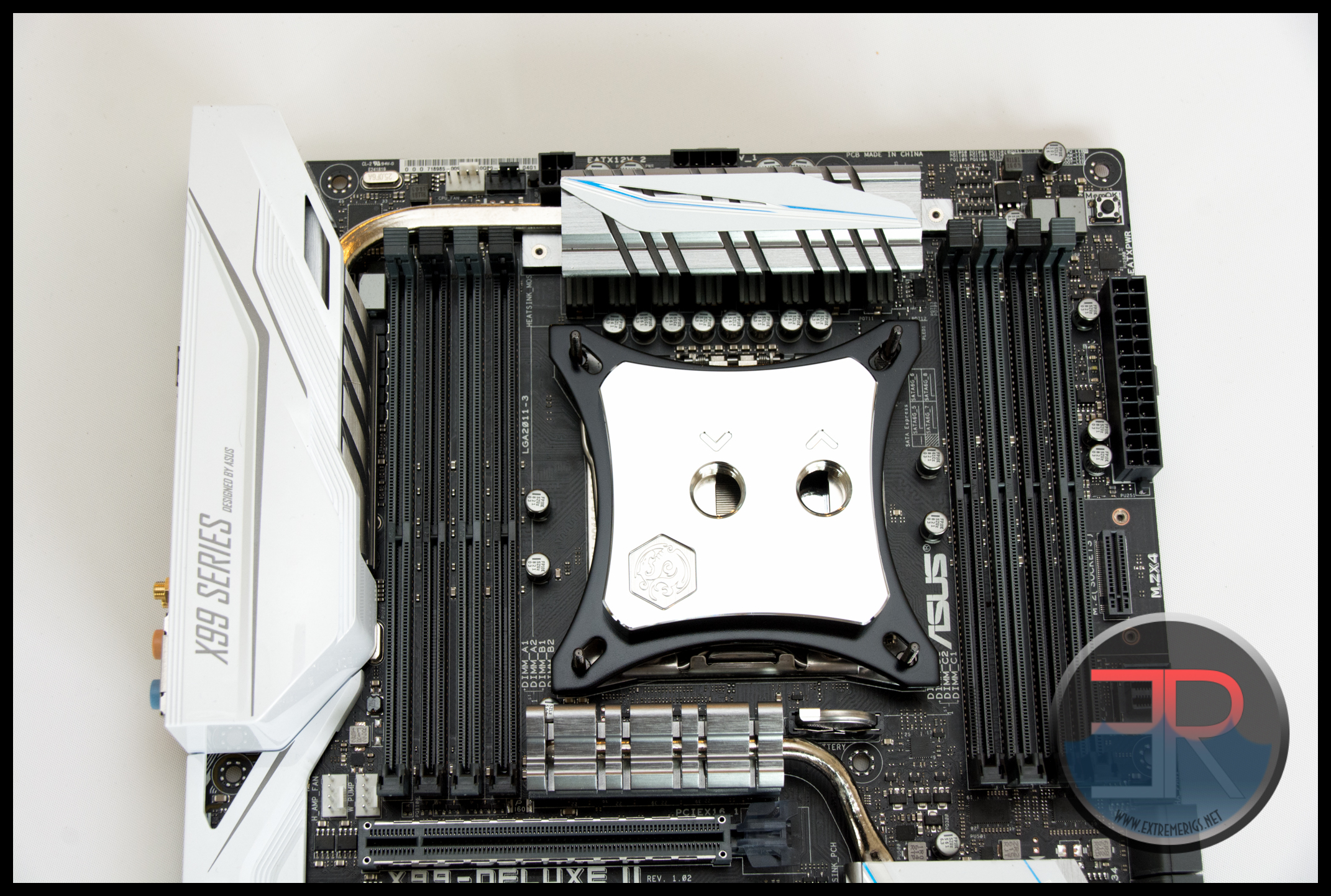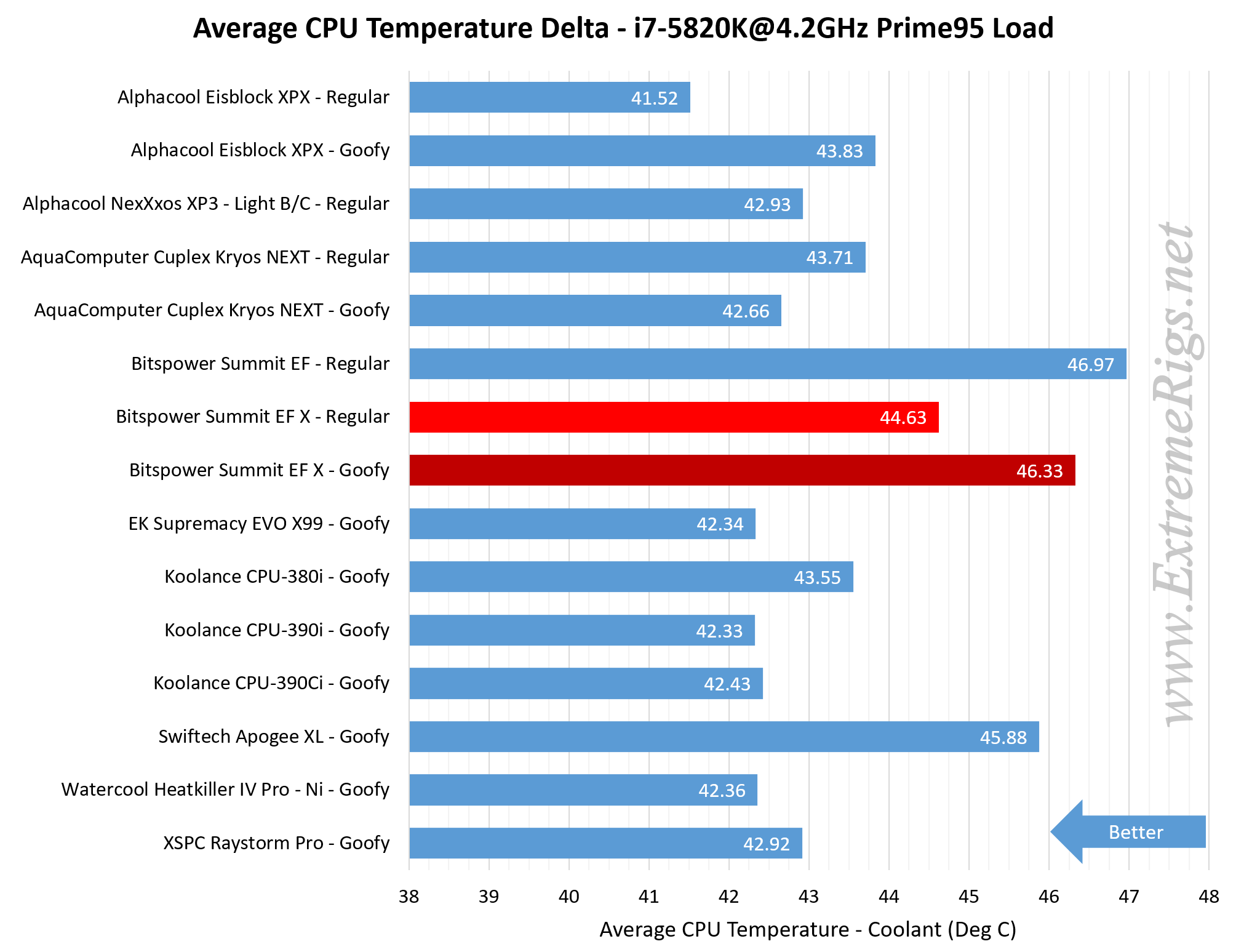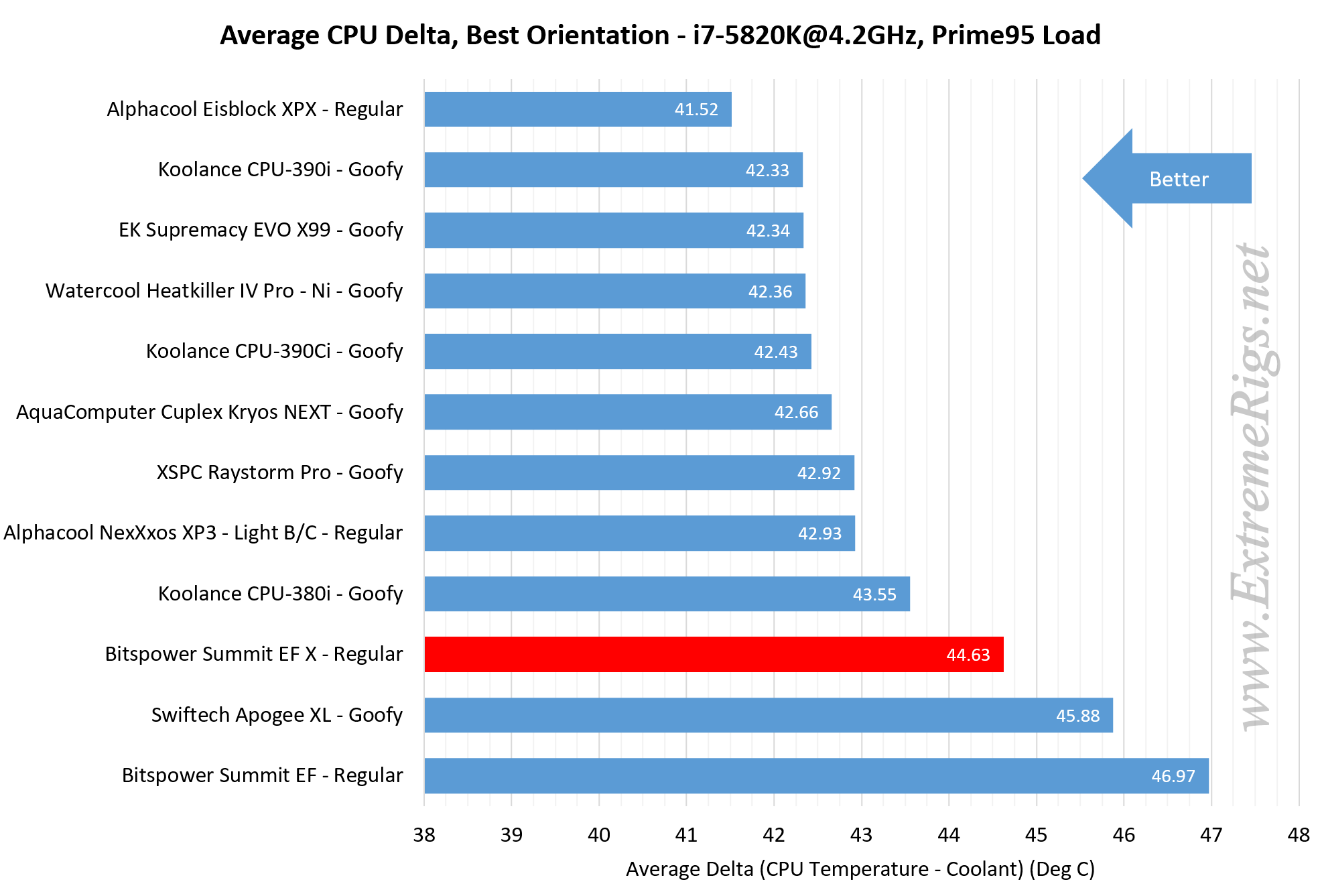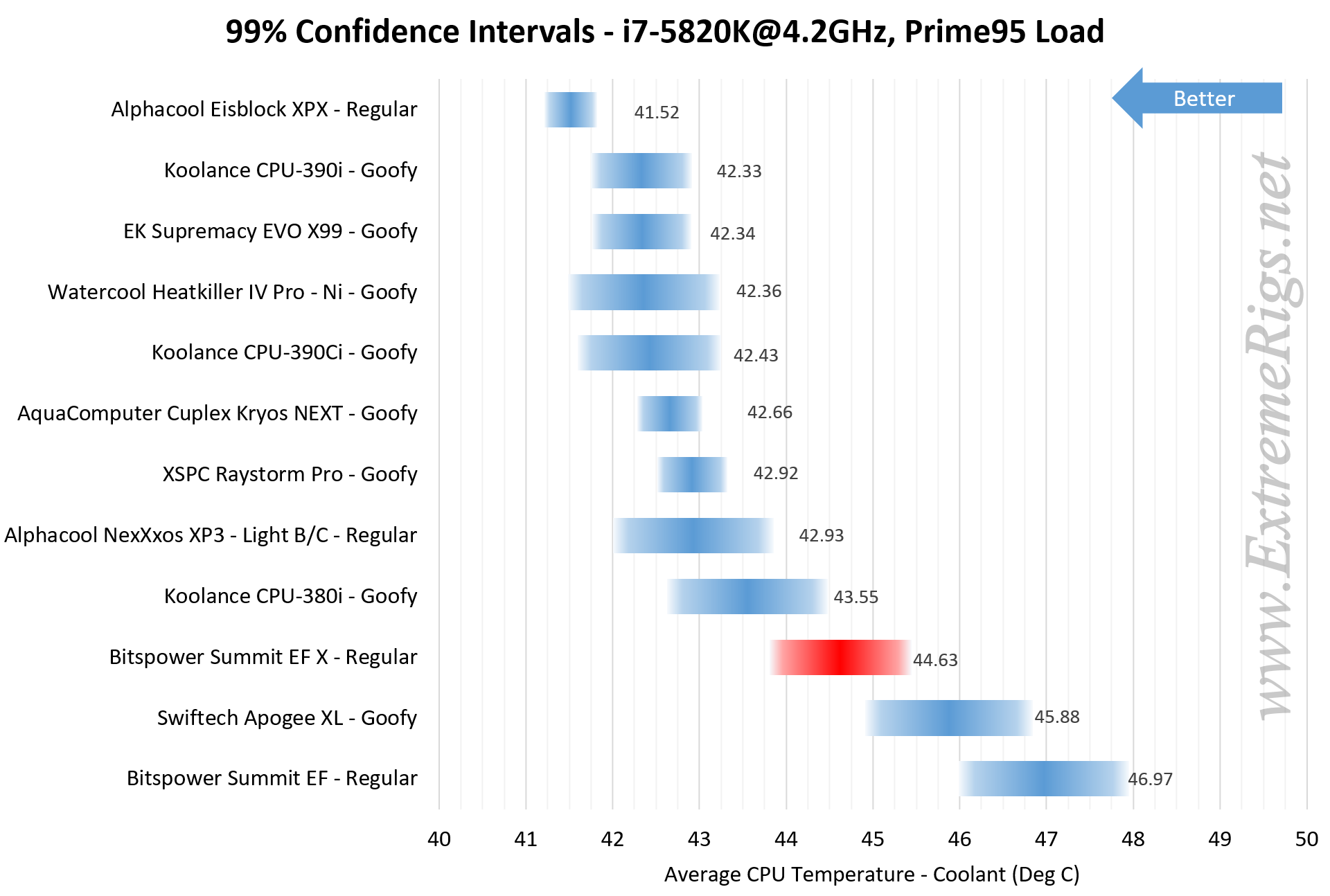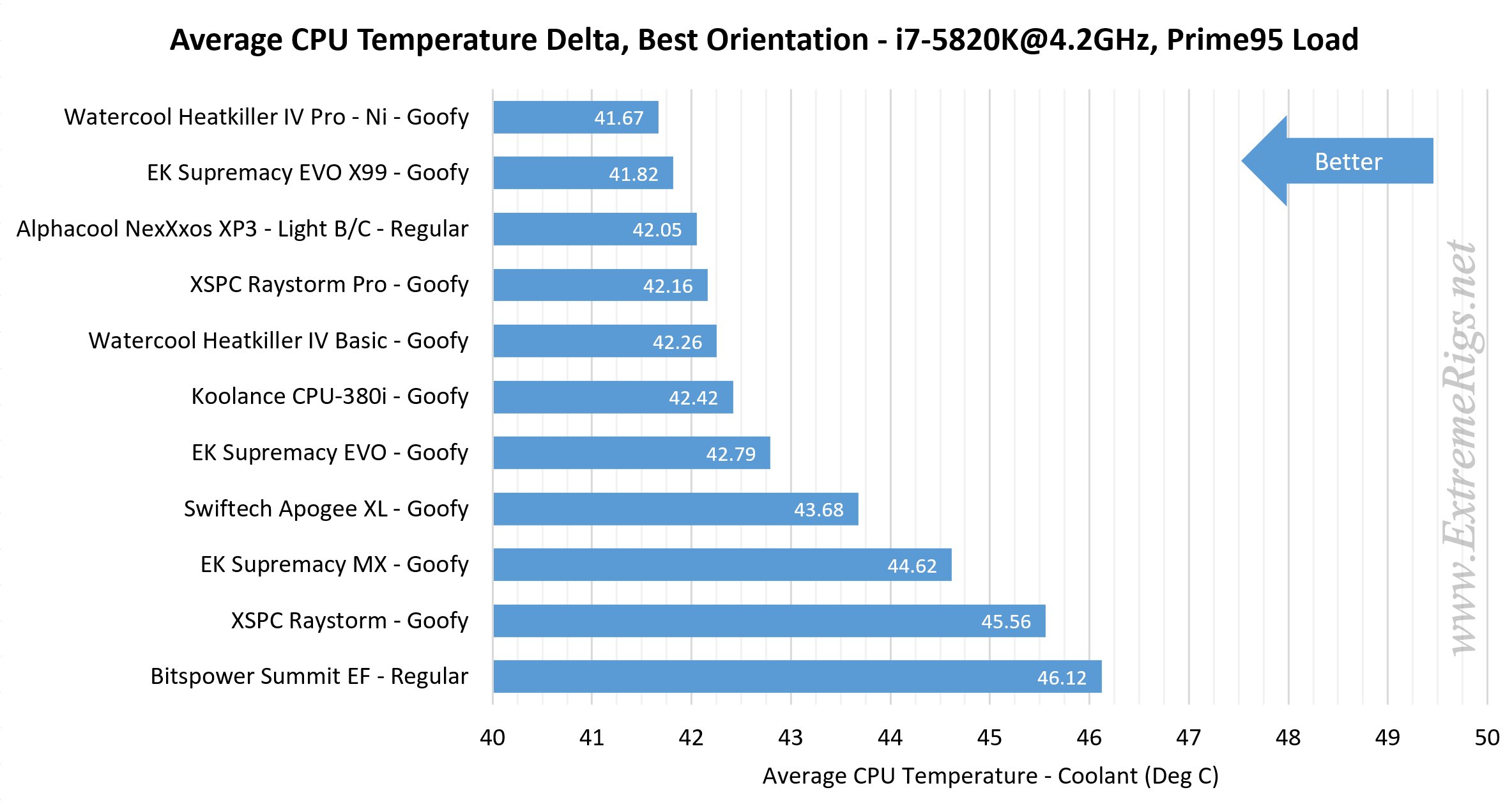Performance
Let’s start off looking at the block restriction. Restriction is the amount of pump pressure it takes to push a certain amount of coolant through a block. To measure this we set up a differential manometer across the block – this will measure the pressure drop. Then we vary the flow of coolant with a tap and measure flow rate using a large King Instruments rota-meter. Here we have compared the old and new Summit to the Watercool Heatkiller IV Pro – one of our favorite performing blocks from the last year:
Surprisingly despite narrowing the channels the Summit EF X is lower in restriction than the older design. It’s also significantly less restrictive than the Heatkiller IV.
This is a very good performance indeed. If we compare to all the other CPU blocks we’ve ever tested then the plot would get confusing, but let’s single out the data at only one flow rate (1 GPM) to make it easier to compare:
Our rule of thumb here is that restriction should be better than 1PSI at 1GPM. It’s somewhat arbitrary of course, but it’s easy to remember. Most blocks meet this requirement, some with a lot of margin to spare. The Summit EF-X is right at the top of the table alongside some block designs that were highly parallel in order to hit such low restriction. In fact both the IceForce and 5Noz blocks are no longer in production so the Summit EF X is the lowest restriction block that you can currently buy. However having said that the Raystorm Pro is right behind it.
Thermal performance
While a block’s restriction is informative, the real test is one of thermal performance – how well can the water block cool a CPU. The Summit EF X was tested on one sample of Intel’s I7-5820K CPU. The block was mounted 6 times in two different orientations for a total of 12 runs. The CPU was overclocked to 4.2GHz and loaded with a custom Prime95 run that utilized all cores. Data was logged for two hours and a 15 minute subsection of this data was chosen automatically for processing by excel based on the lowest standard deviation of the 15 minute window’s air temperature. 15 minutes of data is long enough to provide enough averaging for an accurate measurement while being short enough to avoid any ambient temperature spikes or shifts from affecting the data. As a reminder – when we talk about block orientation we use two definitions. Regular means that the block’s logo is the “correct” horizontal orientation when placed on a normal motherboard in a normal tower case. This for example would be “regular” for the Summit EF X:
“Goofy” on the other hand is a 90 degree rotation from regular:
CPUs usually prefer one orientation because the CPU’s die is not symmetric. In addition most modern water block designs use micro channels orientated horizontally or vertically with a central inlet just as the Summit EF X does. These channels will normally cool best when the central inlet to the micro-channels aligns with the longest side of the die. CPU die alignment is different on the “mainstream” chips vs the “high end enthusiast” chips. For example the 2700K/3770K/4770K/6700K/7700K usually have all generally preferred one orientation, while the 3930K/4930K/5930K/6800K have all preferred the other orientation. The orientation isn’t always the same for all water blocks because manufacturers are not consistent in how their branding lines up with the micro-channels in the block. For this reason even though we might be able to guess the correct orientation based on the block internal design we still test a new block to make sure.
For our X99 based CPU the Summit EF X block definitely preferred to be in a “Regular” orientation just like the EF before it had:
This alphabetical list isn’t the best for comparing the block different blocks. Let’s switch to ordering by performance. Let’s also remove the worse performing mounts to make it simpler and compare only the best performing orientations:
The Summit EF X is clearly near the bottom here despite beating the old design by 2.3C. While normally that much an improvement would be impressive, because the old design is so far behind it ends up being a block that would have been competitive back when the EF was released. Instead it is 3C behind the leading design. Let’s look at the variation in the data because even if we can measure a block within a certain amount of accuracy on this CPU sample there is inherent variation between CPUs which is more and more of a problem as block performance increases. For example if we compute the 99% confidence intervals which represent fairly well the spread of results due to mount variation alone we can see that there is plenty of overlap between results:
However this overlap doesn’t really effect either of the Summit’s which pretty much stand alone after the pack has already charged through.
The eagle eyed amongst you may notice EK’s EVO doing better than in previous reviews. Here’s a side note on that:
Now again, bear in mind that this is only one test of one CPU. Other CPU samples and designs will have different bows and may give slightly different results. From this data we can conclude the Summit EF X water block is optimized for restriction and not thermal performance.







